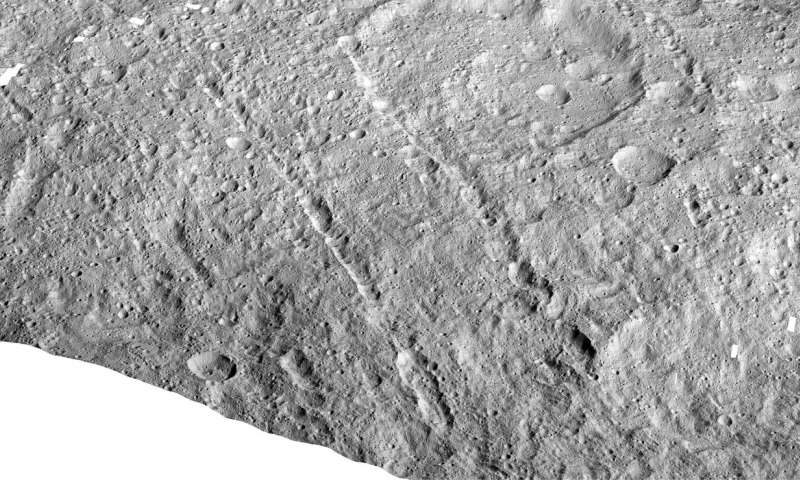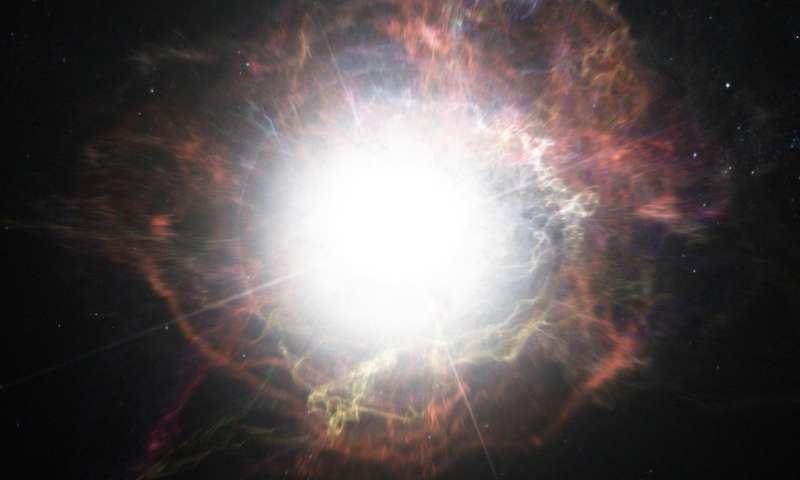The DAWN mission is still throwing up info – see https://phys.org/print429466672.html … a study in Geophysical Research Letters analysed surface features on Ceres in order to find clues about the interior of the asteroid. Chains of pits and small craters and other features litter the surface. Upwelling from below is thought to have created them. See the image below …
 … a star exploded, it seems, and then exploded again, 50 years later. See https://phys.org/print429368348.html … the star should have popped its clogs – but didn't. So what was seen in the first explosion – and are they sure it is the same star? We might also ask – what are the effects of an explosion (or supernova) – bright light? Yet, if true this would bring into doubt everything that has been said about supernovae. In the lateste event the supernova was bright for over 600 days – yet it was supposed to have exploded back in 1954.
… a star exploded, it seems, and then exploded again, 50 years later. See https://phys.org/print429368348.html … the star should have popped its clogs – but didn't. So what was seen in the first explosion – and are they sure it is the same star? We might also ask – what are the effects of an explosion (or supernova) – bright light? Yet, if true this would bring into doubt everything that has been said about supernovae. In the lateste event the supernova was bright for over 600 days – yet it was supposed to have exploded back in 1954.
 At https://phys.org/print429863997.html … a giant ionised gas nebula. It extends for 360,000 light years across a galaxy (apparently circum galactic).
At https://phys.org/print429863997.html … a giant ionised gas nebula. It extends for 360,000 light years across a galaxy (apparently circum galactic).
At https://tallbloke.wordpress.com/2017/11/15/haze-keeps-pluto-cool-by-kick… … Pluto had temperatures close to -203 degrees (colder than expected) according to data from the New Horizons spacecraft. The comments at end of piece are very good.
